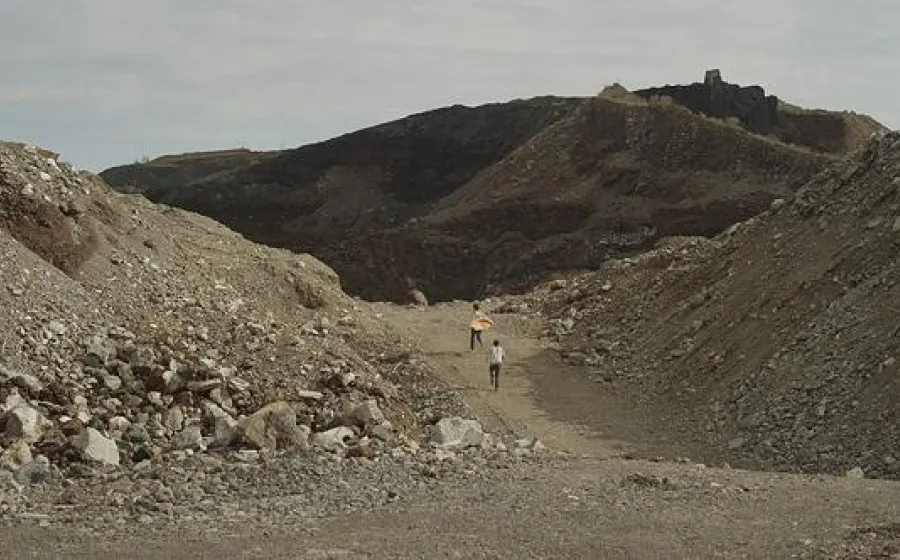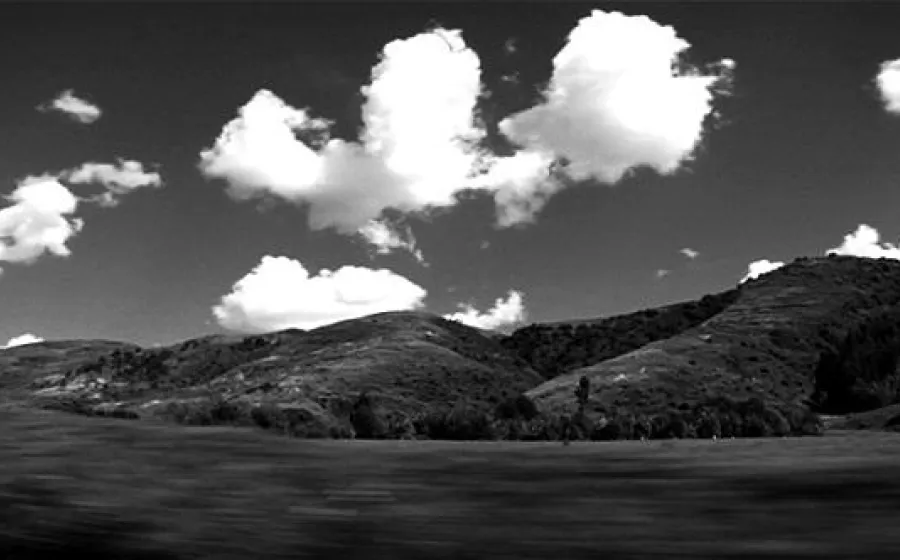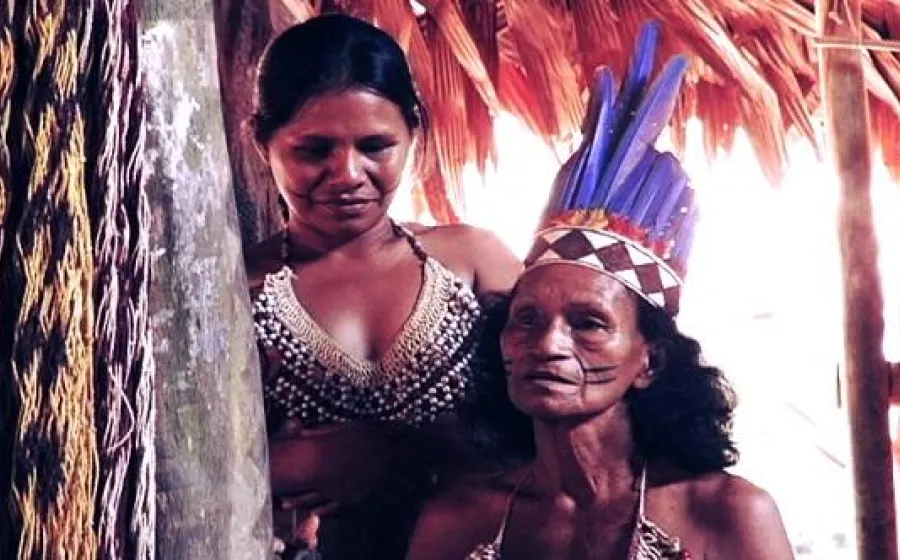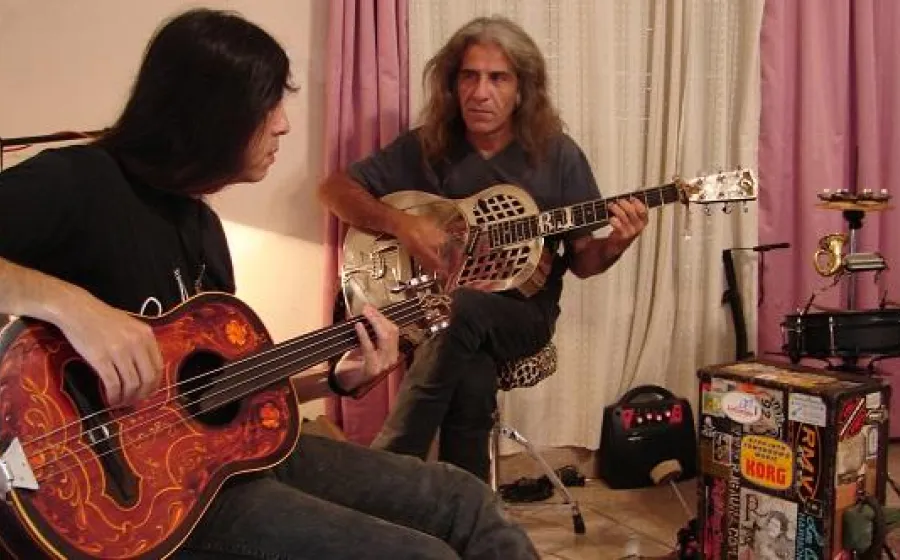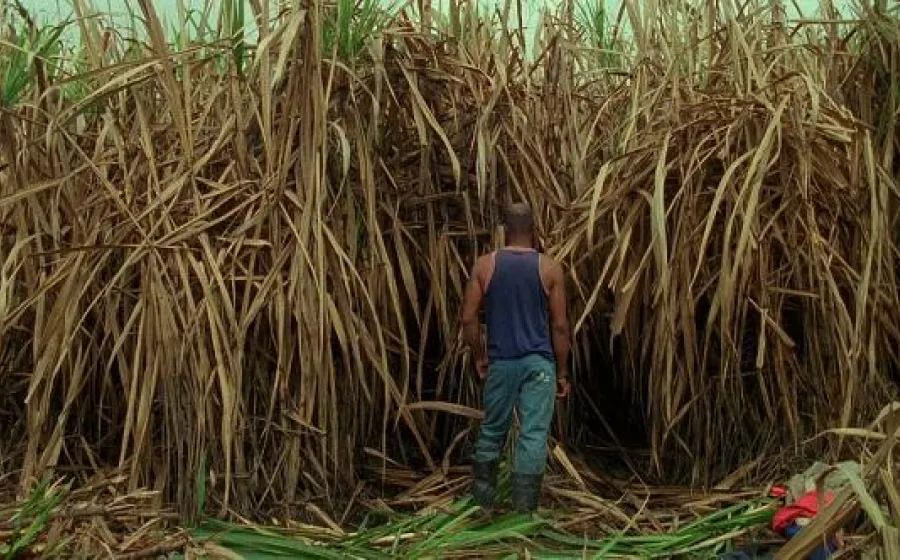MÁRGENES
III Online film festival
1/5
Fecha
14
18 Diciembre 2013
Lugar
Sala Azcona / Sala Borau
Institución
Cineteca Madrid
Márgenes began in February 2012 as the first online Spanish film festival. It focuses on films not released commercially or without access to standard distribution and that make a formal and ethical commitment to cinema and society.
The 3rd edition will be held online between 14 and 31 December 2013 (inclusive) via the www.margenes.org platform and at the following physical venues:
Matadero Cineteca in Madrid, from 14 to 18 December 2013
Uruguayan Cinematheque in Montevideo, from 16 to 18 December 2013
Andalusia Film Archive in Córdoba (Spain), from17 to 21 December 2013 Tonalá Cinema in Mexico City, from 17 to 21 December 2013
FULL PROGRAMME:
> Saturday, 14 December:
Costa da morte (Lois Patiño)
The Costa da Morte (Coast of Death) is a region of Galicia that was considered the end of the world in Roman times. It owes its dramatic name to the many shipwrecks that have occurred in this rocky area prone to fog and storms over the course of history. As we are taken through this land, we observe its inhabitants: fishermen, shellfish gatherers, timber merchants, etc. We watch them work and discover what simultaneously binds them to yet embattles them with the vastness of the region. Wind, stone, sea and fire are the protagonists in this film, and through them we learn a little about the mystery of the landscape, of its union with man, history and legend.
> Sunday, 15 December:
P3ND3JO5 (Raúl Perrone)
P3ND3JO5 is a musical featuring ghosts and skaters. It is a "cumbiópera" (opera with cumbia music) in three acts and a coda to be seen without a break. About faces / glances / desire / love / drama / tragedy / shots / raw B&W footage - 4:3.
Falsos horizontes (Carlos Serrano Azcona)
The revolution that never was. On 15 May 2011, hundreds of young people decided to set up a camp in Madrid's Puerta del Sol to protest against the tough crisis in Spain. Falsos horizontes (False Horizons) is a conversation with some of them, a snapshot of the discontent found then and the questions which today – two years later – are still unanswered. Carlos Serrano continues the analysis of the 15-M movement which he began in his film Banderas falsas. Hundreds of young people decided to set up a camp in Madrid's Puerta del Sol to protest against the tough crisis in Spain.
Fango (José Celestino Campusanto)
Two veteran musicians roam the dusty streets of the inaccessible southern districts of Greater Buenos Aires determined to take the tango rhythm to an extreme by combining it with the sound of trash rock. Neither of them, called El Brujo and El Indio, has ever made the big time and now they put all their hope in their group called Fango. Beatriz, El Brujo's partner, is seeing a married man called Rubén, and out of this situation arises a vendetta between two women, involving neighbourhood factions with peculiar codes of coexistence. There is no sign of any intervention by the government or public authorities, even though these areas are close to large population centres. Differences of this kind continue to be resolved in the same way as hundreds of years ago: with large-calibre firearms that are no less deadly for being home-made. El Brujo and El Indio are obsessed with their music project, El Brujo shouting out his pride at having lived his whole life in such a hostile place without resorting to the violence of his neighbours. Suddenly, life strikes out at him in way that leaves him unable to defend himself.
> Monday, 16 December:
Cabeza de ratón (Ivo Aichenbaum)
The way to measure disillusion: with all the spite in the universe. Ivo Aichenbaum returns to Río Gallegos, the place he left some years before to study filmmaking in Buenos Aires. The diary of his devastating experience of returning is called Cabeza de Ratón (Mouse Head) and is a story that sways constantly between the alienation and disillusion that coming home arouses in the filmmaker. Aichenbaum returns to Patagonia because he has finished his studies and because a relationship in Buenos Aires has ended. He returns following in the footsteps of Pablo, "Chori", his friend who committed suicide, who returned before him and never learned to adapt. "To go off in the wilds and kill yourself is a symptom of fury." Thus the past becomes a ghostly catwalk, a parade of old government videos about the founding of Río Gallegos, snapshots of adolescence, the face of the Ethernaut, and Psycho Clown, the heavy metal band that Aichenbaum and his friend Chori were in.
Slimane (José Ángel Alayón)
A portrayal of a group of teenagers facing the difficulties of surviving in a foreign land. Out of work and with no fixed abode, Slimane and Moha are always falling back on their friends. But an unfortunate incident will put them to the test.
El espacio entre las cosas (Raúl del Busto)
A director prepares a new detective film. The main character is a detective who goes by the name of Glauber Maldonado. Mysterious events convert the life of the detective and of the director into a hazy journey between reality and hallucination.
>Tuesday, 17 December:
Corta (Felipe Guerrero)
Using a fixed camera and the rhythmic force of in-camera editing, Corta is a film about the hypnotic exhaustion produced by the bodies of men cutting sugar cane. While contemplating the frenzied yet smooth gestures of manual labour, it reveals the landscape of the surrounding plantations, an omnipresent backdrop against which the cane disappears. Corta is a pure cinema experience, about the natural daily ritual of a timeless world.
Vidaextra (Ramiro Ledo Cordeiro)
In Barcelona, the general strike of 29 September 2010 meets with The Aesthetics of Resistance by Peter Weiss. That night's discussions are later be taken up again by the film's characters: five friends who are now neither adolescents nor communist activists, unlike the characters in the book.
Fogo (Yulene Olaizola)
An unknown phenomenon threatens the life of the rural community of Fogo, located on a small island in the region of Newfoundland, Canada. It is now almost completely abandoned, but although there are scarce possibilities of surviving there, some residents cling on.
> Wednesday, 18 December:
El modelo (Germán Scelso) Jordi has no movement in his left arm and leg and begs for money on the streets by exhibiting his disability. The portrait of this character and his relationship with the author create a fresco of Spain today, convulsed by immigration problems and the economic crisis.
Patrimonio nacional (Jean Castejón Gilabert)
Patrimonio Nacional (National Heritage) is the organisation that protects state assets on behalf of the Spanish Crown. The Holy Cross Abbey at the Valley of the Fallen is one of those assets. It is Franco's mausoleum and is open to the public just like any other monument. It also belongs to the circles of time and Spain's collective memory. This film explores those circles as a way of explaining how the mausoleum came about and what it means today.
Torres y cometas (Gonçalo Tocha)
A humorous take on medieval Guimarães, cradle of the Kingdom of Portugal and a World Heritage Site, by Gonçalo Tocha (whose É na Terra não é na Lua won awards at Bafici, Locarno and DocumentaMadrid) who flies "kite-like"—watch out for the contraption in the bizarre number with the accordion at the end—over the city's traditional legends and towers: the second tower of the Basilica of São Pedro that was never built, the Torre da Alfândega sandwiched between two buildings, and the mysterious technical fault at São Torcato that distorts sounds.
The 3rd edition will be held online between 14 and 31 December 2013 (inclusive) via the www.margenes.org platform and at the following physical venues:
Matadero Cineteca in Madrid, from 14 to 18 December 2013
Uruguayan Cinematheque in Montevideo, from 16 to 18 December 2013
Andalusia Film Archive in Córdoba (Spain), from17 to 21 December 2013 Tonalá Cinema in Mexico City, from 17 to 21 December 2013
FULL PROGRAMME:
> Saturday, 14 December:
Costa da morte (Lois Patiño)
The Costa da Morte (Coast of Death) is a region of Galicia that was considered the end of the world in Roman times. It owes its dramatic name to the many shipwrecks that have occurred in this rocky area prone to fog and storms over the course of history. As we are taken through this land, we observe its inhabitants: fishermen, shellfish gatherers, timber merchants, etc. We watch them work and discover what simultaneously binds them to yet embattles them with the vastness of the region. Wind, stone, sea and fire are the protagonists in this film, and through them we learn a little about the mystery of the landscape, of its union with man, history and legend.
> Sunday, 15 December:
P3ND3JO5 (Raúl Perrone)
P3ND3JO5 is a musical featuring ghosts and skaters. It is a "cumbiópera" (opera with cumbia music) in three acts and a coda to be seen without a break. About faces / glances / desire / love / drama / tragedy / shots / raw B&W footage - 4:3.
Falsos horizontes (Carlos Serrano Azcona)
The revolution that never was. On 15 May 2011, hundreds of young people decided to set up a camp in Madrid's Puerta del Sol to protest against the tough crisis in Spain. Falsos horizontes (False Horizons) is a conversation with some of them, a snapshot of the discontent found then and the questions which today – two years later – are still unanswered. Carlos Serrano continues the analysis of the 15-M movement which he began in his film Banderas falsas. Hundreds of young people decided to set up a camp in Madrid's Puerta del Sol to protest against the tough crisis in Spain.
Fango (José Celestino Campusanto)
Two veteran musicians roam the dusty streets of the inaccessible southern districts of Greater Buenos Aires determined to take the tango rhythm to an extreme by combining it with the sound of trash rock. Neither of them, called El Brujo and El Indio, has ever made the big time and now they put all their hope in their group called Fango. Beatriz, El Brujo's partner, is seeing a married man called Rubén, and out of this situation arises a vendetta between two women, involving neighbourhood factions with peculiar codes of coexistence. There is no sign of any intervention by the government or public authorities, even though these areas are close to large population centres. Differences of this kind continue to be resolved in the same way as hundreds of years ago: with large-calibre firearms that are no less deadly for being home-made. El Brujo and El Indio are obsessed with their music project, El Brujo shouting out his pride at having lived his whole life in such a hostile place without resorting to the violence of his neighbours. Suddenly, life strikes out at him in way that leaves him unable to defend himself.
> Monday, 16 December:
Cabeza de ratón (Ivo Aichenbaum)
The way to measure disillusion: with all the spite in the universe. Ivo Aichenbaum returns to Río Gallegos, the place he left some years before to study filmmaking in Buenos Aires. The diary of his devastating experience of returning is called Cabeza de Ratón (Mouse Head) and is a story that sways constantly between the alienation and disillusion that coming home arouses in the filmmaker. Aichenbaum returns to Patagonia because he has finished his studies and because a relationship in Buenos Aires has ended. He returns following in the footsteps of Pablo, "Chori", his friend who committed suicide, who returned before him and never learned to adapt. "To go off in the wilds and kill yourself is a symptom of fury." Thus the past becomes a ghostly catwalk, a parade of old government videos about the founding of Río Gallegos, snapshots of adolescence, the face of the Ethernaut, and Psycho Clown, the heavy metal band that Aichenbaum and his friend Chori were in.
Slimane (José Ángel Alayón)
A portrayal of a group of teenagers facing the difficulties of surviving in a foreign land. Out of work and with no fixed abode, Slimane and Moha are always falling back on their friends. But an unfortunate incident will put them to the test.
El espacio entre las cosas (Raúl del Busto)
A director prepares a new detective film. The main character is a detective who goes by the name of Glauber Maldonado. Mysterious events convert the life of the detective and of the director into a hazy journey between reality and hallucination.
>Tuesday, 17 December:
Corta (Felipe Guerrero)
Using a fixed camera and the rhythmic force of in-camera editing, Corta is a film about the hypnotic exhaustion produced by the bodies of men cutting sugar cane. While contemplating the frenzied yet smooth gestures of manual labour, it reveals the landscape of the surrounding plantations, an omnipresent backdrop against which the cane disappears. Corta is a pure cinema experience, about the natural daily ritual of a timeless world.
Vidaextra (Ramiro Ledo Cordeiro)
In Barcelona, the general strike of 29 September 2010 meets with The Aesthetics of Resistance by Peter Weiss. That night's discussions are later be taken up again by the film's characters: five friends who are now neither adolescents nor communist activists, unlike the characters in the book.
Fogo (Yulene Olaizola)
An unknown phenomenon threatens the life of the rural community of Fogo, located on a small island in the region of Newfoundland, Canada. It is now almost completely abandoned, but although there are scarce possibilities of surviving there, some residents cling on.
> Wednesday, 18 December:
El modelo (Germán Scelso) Jordi has no movement in his left arm and leg and begs for money on the streets by exhibiting his disability. The portrait of this character and his relationship with the author create a fresco of Spain today, convulsed by immigration problems and the economic crisis.
Patrimonio nacional (Jean Castejón Gilabert)
Patrimonio Nacional (National Heritage) is the organisation that protects state assets on behalf of the Spanish Crown. The Holy Cross Abbey at the Valley of the Fallen is one of those assets. It is Franco's mausoleum and is open to the public just like any other monument. It also belongs to the circles of time and Spain's collective memory. This film explores those circles as a way of explaining how the mausoleum came about and what it means today.
Torres y cometas (Gonçalo Tocha)
A humorous take on medieval Guimarães, cradle of the Kingdom of Portugal and a World Heritage Site, by Gonçalo Tocha (whose É na Terra não é na Lua won awards at Bafici, Locarno and DocumentaMadrid) who flies "kite-like"—watch out for the contraption in the bizarre number with the accordion at the end—over the city's traditional legends and towers: the second tower of the Basilica of São Pedro that was never built, the Torre da Alfândega sandwiched between two buildings, and the mysterious technical fault at São Torcato that distorts sounds.

